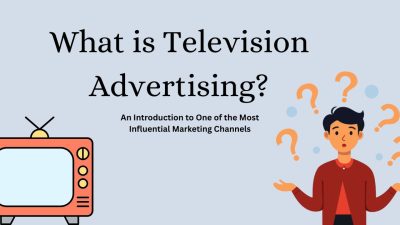Television advertising has weathered many storms over the decades—from the rise of cable networks to the explosion of streaming services. As digital marketing continues to dominate marketing budgets and consumer attention shifts to smartphones and social media, many business leaders are asking a crucial question: is television advertising still effective?
The answer isn’t as straightforward as you might expect. While the television landscape has transformed dramatically, TV advertising continues to play a significant role in successful marketing strategies. Understanding how, when, and why television advertising works requires examining both its evolving strengths and its current limitations.
The Current State of Television Advertising
Television advertising revenue in the United States reached approximately $61.3 billion in 2023, demonstrating that brands continue investing heavily in this medium. However, this figure represents a shift from traditional broadcast television to include connected TV and streaming platforms.
The television advertising ecosystem now encompasses several distinct channels:
Traditional Broadcast Television: Network TV still commands substantial audiences, particularly for live events, news, and prime-time programming. Major sporting events like the Super Bowl continue to draw massive viewership and command premium advertising rates.
Cable Television: While cable viewership has declined, it remains valuable for reaching specific demographics and niche audiences through targeted programming.
Connected TV and Streaming: Platforms like Hulu, YouTube TV, and ad-supported tiers of Netflix and Disney+ have created new opportunities for television advertising with enhanced targeting capabilities.
Over-the-Top (OTT) Advertising: This includes advertising on streaming services accessed through internet-connected devices, offering more precise audience targeting than traditional TV.
Why Television Advertising Remains Effective

Massive Reach and Brand Awareness
Television’s greatest strength lies in its ability to reach large audiences simultaneously. A single well-placed TV commercial can expose millions of viewers to a brand message within seconds. This mass reach makes television particularly effective for:
- Building brand awareness quickly
- Launching new products or services
- Reinforcing brand messaging across diverse demographics
- Creating cultural moments that generate additional media coverage
Emotional Impact and Storytelling
Television advertising excels at creating emotional connections with audiences. The combination of visual imagery, sound, music, and narrative allows brands to tell compelling stories that resonate with viewers. This emotional engagement often translates to stronger brand recall and purchase intent compared to other advertising formats.
Research shows that emotionally engaging advertisements are more likely to be remembered and shared, extending their impact beyond the initial viewing.
Credibility and Trust
Television advertising carries an implicit credibility that many digital advertising formats lack. Viewers often perceive brands that advertise on television as more established and trustworthy. This “TV credibility effect” can be particularly valuable for newer brands looking to establish market presence.
Complementary Effect with Digital Marketing
Television advertising works exceptionally well when integrated with digital marketing strategies. TV commercials can drive immediate online search behavior, website visits, and social media engagement. This cross-channel synergy amplifies the effectiveness of both television and digital marketing efforts.
Challenges Facing Television Advertising

Declining Traditional Viewership
Traditional television viewership has declined significantly, particularly among younger demographics. Cord-cutting continues as consumers abandon cable subscriptions in favor of streaming services. This trend has fragmented audiences across multiple platforms, making it more difficult to achieve the mass reach that made television advertising so powerful.
Ad Avoidance and Fragmented Attention
Modern viewers have numerous ways to avoid television commercials:
- DVR technology allows viewers to skip ads entirely
- Streaming services offer ad-free subscription tiers
- Second-screen behavior means viewers often engage with mobile devices during commercial breaks
- Shorter attention spans make it harder to capture and maintain viewer interest
Higher Costs and ROI Challenges
Television advertising remains expensive, particularly for premium time slots and popular programming. The cost per thousand impressions (CPM) for television advertising is significantly higher than most digital advertising formats. This higher cost, combined with declining viewership, has made it more challenging to achieve positive return on investment.
Limited Targeting Capabilities
Traditional television advertising offers limited targeting options compared to digital platforms. While connected TV and streaming services provide better targeting capabilities, they still lag behind the precision offered by social media and search advertising platforms.
When Television Advertising Works Best

Large-Scale Brand Campaigns
Television advertising remains highly effective for major brand campaigns aimed at broad audiences. Companies with substantial marketing budgets can leverage television’s mass reach to build brand awareness and establish market presence quickly.
Product Launches and Announcements
Television provides an excellent platform for announcing new products, services, or company initiatives. The credibility and reach of television can help generate immediate market awareness and media coverage.
Local and Regional Businesses
Local television advertising can be particularly effective for businesses serving specific geographic markets. Local TV stations often offer more affordable advertising rates and can help businesses reach their target customers within their service areas.
Event-Driven Marketing
Television advertising during major events, sports competitions, or popular programming can capture highly engaged audiences. These moments often generate higher attention levels and better recall rates.
Adapting Television Advertising for Modern Success
Embrace Connected TV and Streaming
Smart advertisers are shifting budgets toward connected TV and streaming platforms that offer better targeting capabilities while maintaining the visual impact of television advertising. These platforms allow for more precise audience targeting and better measurement of campaign effectiveness.
Create Multi-Platform Campaigns
Successful television advertising campaigns now integrate across multiple platforms. A TV commercial might drive viewers to a website, encourage social media engagement, or prompt mobile app downloads. This cross-platform approach maximizes the impact of television advertising investments.
Focus on Quality and Creativity
With limited time to capture viewer attention, television advertisements must be exceptionally creative and engaging. High-quality production values, compelling storytelling, and memorable messaging become even more critical when competing for fragmented attention.
Leverage Data and Analytics
Modern television advertising platforms provide more detailed analytics than ever before. Advertisers can track viewer engagement, measure brand lift, and optimize campaigns based on performance data. This data-driven approach helps maximize the effectiveness of television advertising investments.
The Future of Television Advertising
Television advertising continues evolving rather than disappearing. The integration of artificial intelligence, improved targeting capabilities, and interactive features will likely enhance the effectiveness of television advertising over time.
Addressable television advertising, which allows different households to see different advertisements during the same programming, represents a significant advancement in targeting capabilities. This technology combines the mass reach of television with the precision targeting of digital platforms.
Making the Right Choice for Your Business
Determining whether television advertising is still effective requires evaluating your specific business goals, target audience, and marketing budget. Consider these factors:
Budget Requirements: Television advertising requires substantial investment for production and media placement. Ensure your budget can support a sustained campaign that generates meaningful results.
Target Audience: Research your target audience’s media consumption habits. If they primarily consume content through ad-free streaming services or spend most of their time on mobile devices, television advertising may not be the most efficient choice.
Campaign Objectives: Television advertising works best for brand awareness, product launches, and broad market reach. If your goals focus on direct response or highly targeted conversions, digital advertising platforms may be more effective.
Integration Opportunities: Consider how television advertising can complement your existing marketing strategies. The most effective campaigns often combine television with digital marketing for maximum impact.
Television advertising remains a powerful tool when used strategically and integrated with comprehensive marketing strategies. While the medium has evolved significantly, its ability to create emotional connections, build brand credibility, and reach large audiences ensures its continued relevance in the marketing landscape.





